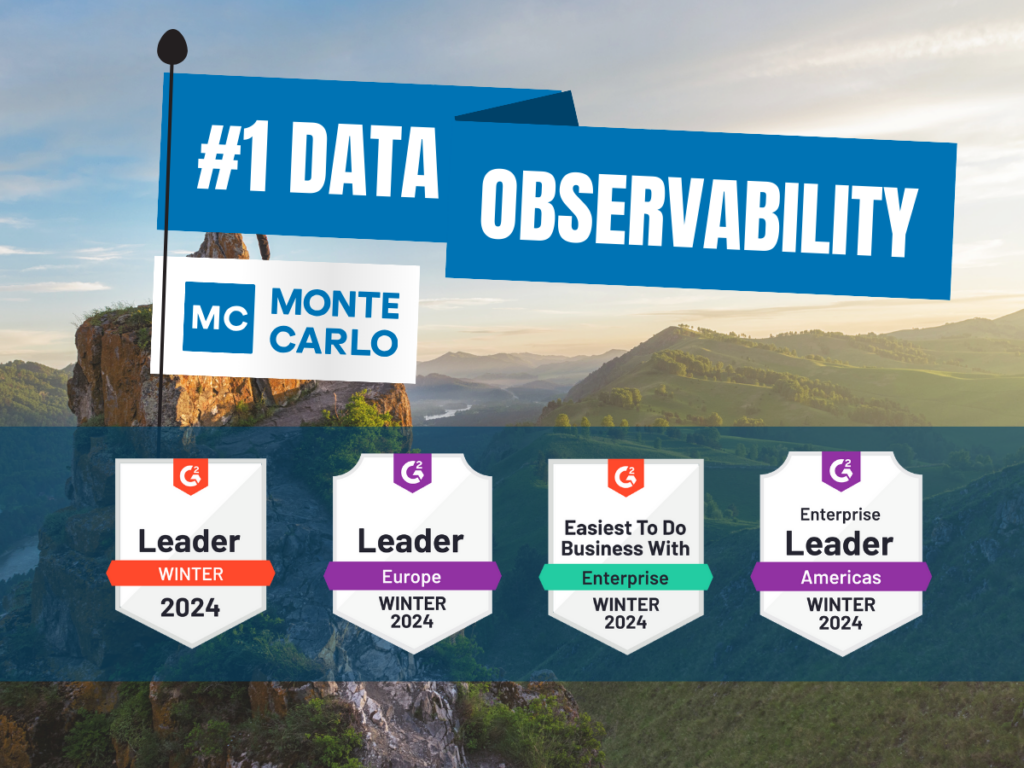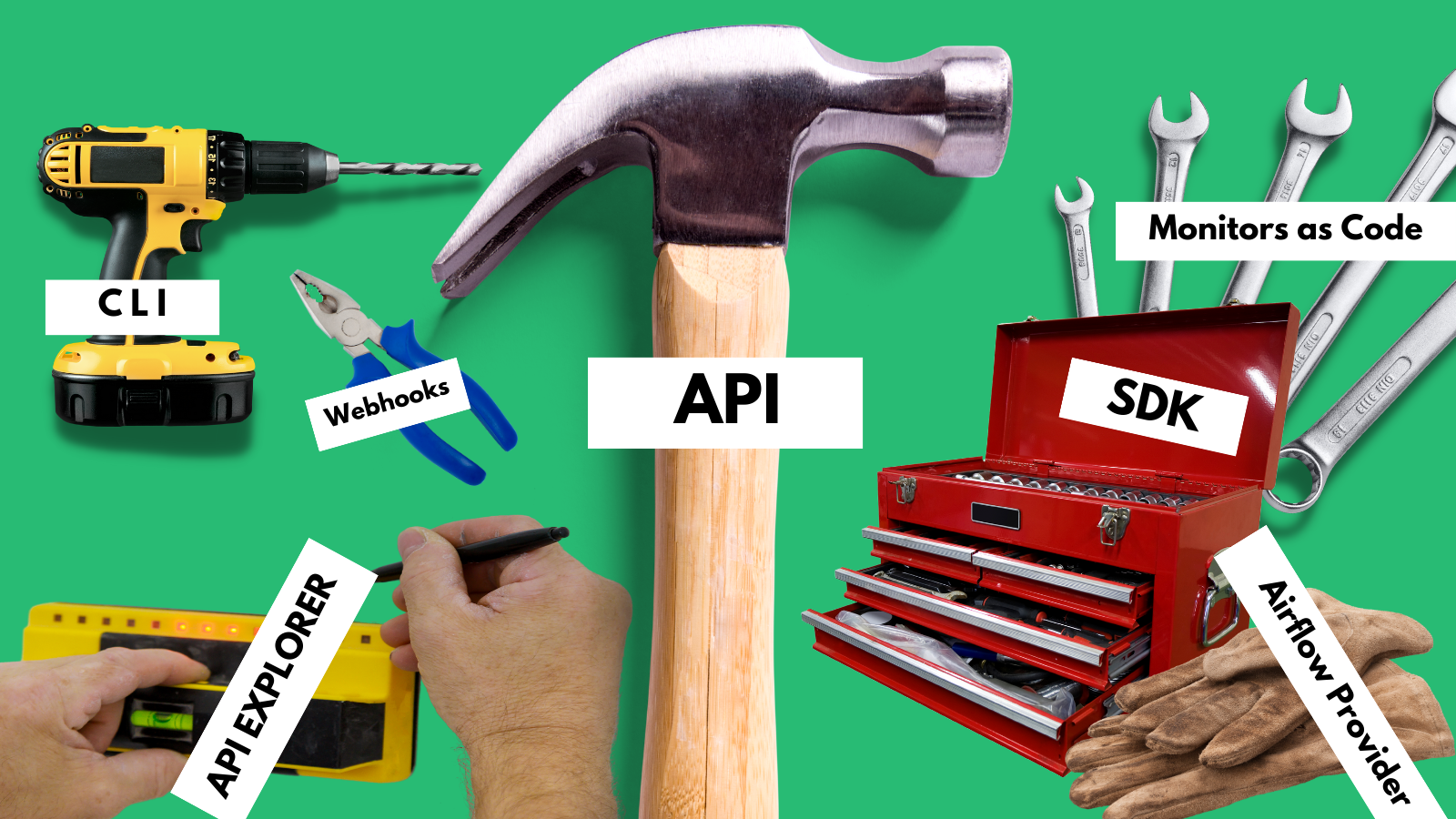Reflections on Strong Momentum and Category Leadership in Data Observability

When we launched the data observability category in 2020, we set out to solve a very real problem: data trust.
In the preceding months, I met with hundreds of data leaders about what kept them up at night. Time and again, data leaders regaled stories of how their critical dashboards broke the morning of an executive meeting or their ML model generated inaccurate predictions. The list goes on.
What if there was a way to ensure that your data was trustworthy and reliable? Enter data observability, the data stack-defining solution that’s helped data leaders and their teams sleep soundly at night knowing that their stakeholders can trust their data and AI.
Four years, hundreds of customers, and an entire category later and we’re just getting started.
In fact, in 2023, we experienced 100 % year-over-year growth, welcomed hundreds of new customers into the Monte Carlo community, launched the Reliability Pioneers program, and released over 150+ new product features and integrations.
Here’s why FY24 was our best yet – and why the need for reliable data has never been stronger.
Leading the industry in enterprise adoption
Over the past few years, the data observability category has moved from a hot, emerging technology and into the mainstream echelon of must-have solutions for your stack. It’s near the top of Gartner’s Hype Cycle, there are hundreds of reviews on G2Crowd, and in-depth reports comparing vendor offerings have been published by GigaOm and Ventana. Across all fronts, Monte Carlo is the leader of the pack, pioneering what’s possible with data and AI reliability.

Beyond our recognition in the category, we were also named one of G2Crowd’s 100 Fastest Growing Products for 2024, signifying our unrivaled customer adoption across the U.S., EMEA, and other markets.
It won’t be long before it’s considered malpractice to launch a data and AI product without data observability similar to how it’s considered malpractice to launch an application without any application monitoring system… or to go skydiving without a parachute.
“In 2021, we were flying blind. Our developers didn’t know where to investigate and data engineering teams were trying to humpty dumpty fix dashboards. That was a huge waste of time. Data quality can be death by 1,000 cuts, but with Monte Carlo we have meaningfully increased our reliability levels in a way that has a real impact on the business.”
Andy Owens VP of Analytics, Kargo
For a lot of teams, that day is already here. In the last year, we’ve grown our revenue 100%. In the last six months, organizations like Dell, American Airlines, LiveNation, and DraftKings leverage our award-winning data observability solution. And in the last three months, Monte Carlo added more customers than in any previous quarter, with new users onboarding every day.
Last year, we also hosted our third annual IMPACT: The Data Observability Summit where we announced the launch of the first-ever data observability community, the Reliability Pioneers. This elite group of leaders across the data & AI community are committed to educating and evangelizing data quality and governance frameworks, best practices, technologies, and more. With participation from companies like Affirm, HubSpot, Payoneer, and JetBlue, the Pioneers are paving the way forward for the future of data and AI reliability.
Setting the standard for data observability
Delivering reliable data in the midst of modernizing and transforming your infrastructure is no easy feat. Data teams–especially those in the enterprise– need to monitor the architectures of yesterday, today, and tomorrow.
“Monte Carlo was far enough down the road that they had proven they could do what they promised but still felt very responsive to our feature requests. The solution also was very developer friendly with code-first features, but still had a user-friendly UI so both our technical users and data stewards could leverage it effectively.”
Justin Swenson Data, Analytics, and AI Governance Lead, Sub-Zero
That means Monte Carlo needs to support and integrate across those same solutions and architectures. We’ve done this by shipping integrations for:
- Transactional and enterprise data warehouse solutions like Oracle, SAP, Teradata, MySQL, Azure SQL database, Postgres, Greenplum.
- Deepening our integrations with modern orchestration tools like dbt and Airflow. Supporting new table formats in Snowflake and Databricks. Adding capabilities for Azure Synapse Analytics and Microsoft Data Fabric.
- Releasing new products by building solutions for pipeline runtime optimization with Performance product and ad-hoc data analysis Data Explorer.
- Supporting new integrations with leading data catalogs, including Atlan, data.world and Alation, to help teams manage and alert to data quality issues as part of a larger data governance strategy.
- Building integrations for vector databases like Pinecone and Supabase along with streaming solutions like Kafka to enable customers to scale AI reliability.
- Launching new features to enhance usability, including an optimized Notifications framework, and improvements to our incident resolution workflows.
All in all, our product team shipped 150 new features this year, more than any other data observability solution on the market today. This blazing speed is only possible for two reasons.
- Our focus on listening to and developing for the largest customer base in data observability.
- Our dedication to making Monte Carlo the most secure hybrid platform possible. It’s simply not possible to deliver at the speed our customers demand, and if you are supporting both a SaaS and on-premise versions of your solution–ask Databricks and Snowflake.
And we’re just getting started. With new features launched every week, Monte Carlo’s data observability solution grows with your company’s evolving data needs, from analytics to AI and more.
The future of data and AI is reliability
Data is becoming even more valuable and accessible than ever before. More pipelines, more data sources, and more consumers.
As we look to FY25, a few trends informed by the explosion of data will impact the future of our space – GenAI, the semantic layer, and data governance – all of which depend on the reliability of your underlying data.
Every organization I have spoken with in the last few months is prioritizing at least one of these initiatives. Most are working on them in parallel. For data leaders, the future holds tremendous opportunity, but also a tremendous responsibility for data teams and the industry as a whole.
I believe we are up for the challenge. Do you?
 Product demo.
Product demo.  What is data observability?
What is data observability?  What is a data mesh--and how not to mesh it up
What is a data mesh--and how not to mesh it up  The ULTIMATE Guide To Data Lineage
The ULTIMATE Guide To Data Lineage 





